Containment Performance (CP)
All fume hoods on the EPFL campus must pass successfully the containment performance test (CP). The CP was developed jointly by EPFL and a specialized company for qualifying the safety of the fume hood. In particular, it allows determining the maximum working height for sufficient protection. Remember that this engineering control requires proper use (see Use and good practices).
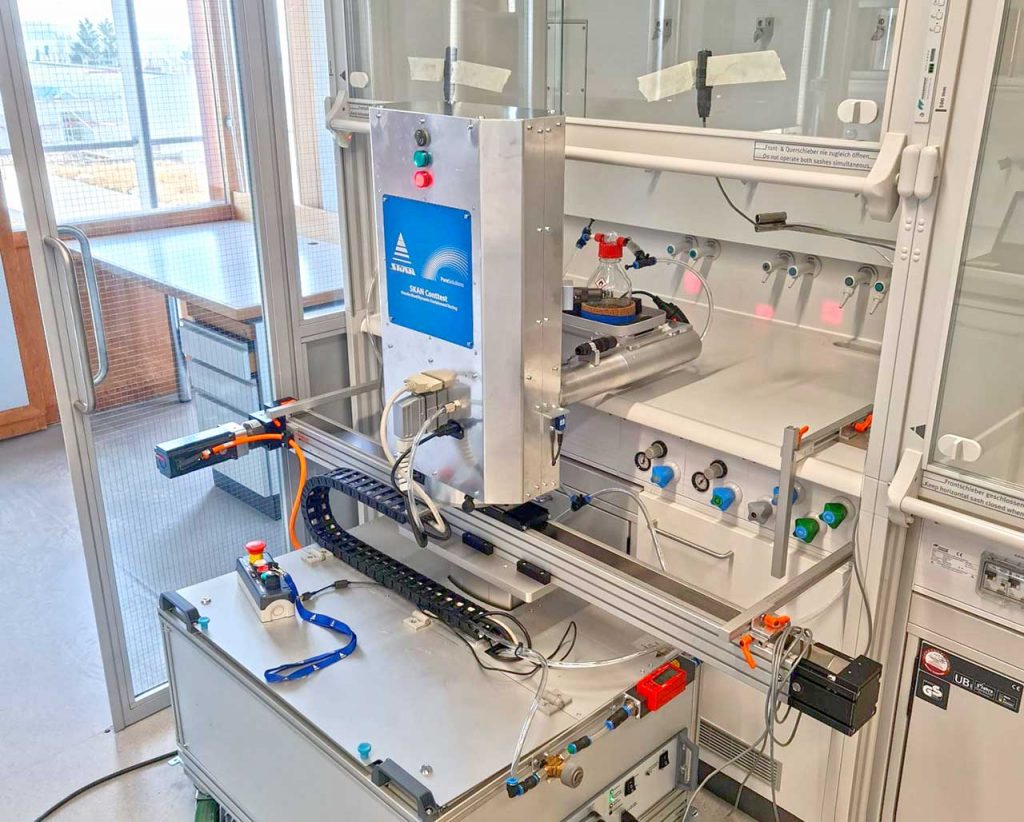
A fume hood that has passed the qualification is validated for a maximum working opening of 50 cm or 40 cm (sash height).
The American Chemical Society classifies the risk of laboratories with a semi-quantitative approach of control banding. Thus, “Chemical Safety Level 3” typically corresponds to research laboratories in chemistry, pharmacology and chemical engineering. There are moderate risks with the presence of small quantities of dangerous products, including carcinogens, mutagens or toxic for reproduction (CMR). It is estimated that all Campus fume hoods must be Qualified for Chemical Safety level 3 (QCSL3).
High risks in limited quantities may also be present with OHS (Occupational Health and Safety) approval. For more information see the Chemical Approvals page.
We introduced the QCSL3 concept at the end of 2021. All 900 fume hoods on the Campus will be qualified every 5 years and by 2024 they will all have been checked once. This is in addition to all the maintenance work that ensures reliable functionality according to the Swiss standard.
If you have any questions about the level of protection provided by your fume hood regarding your activities, please contact [email protected]. If you have a problem, you should send an @mail to the Alarm and Security Center (CAE) or call 34000.
Yes, someone has to be there to receive the specialists and give them access to the laboratories. It’s also about ensuring that they can operate safely.
The Containment Performance Test takes about 30 minutes. We cannot give you an exact schedule for the test. The fume hood will be made available as soon as the test is completed.
Yes, almost anything that is easily removable should be taken out of the chapel.
Examples include glassware, chemical storage, samples, and small removable devices (e.g., hot plates).
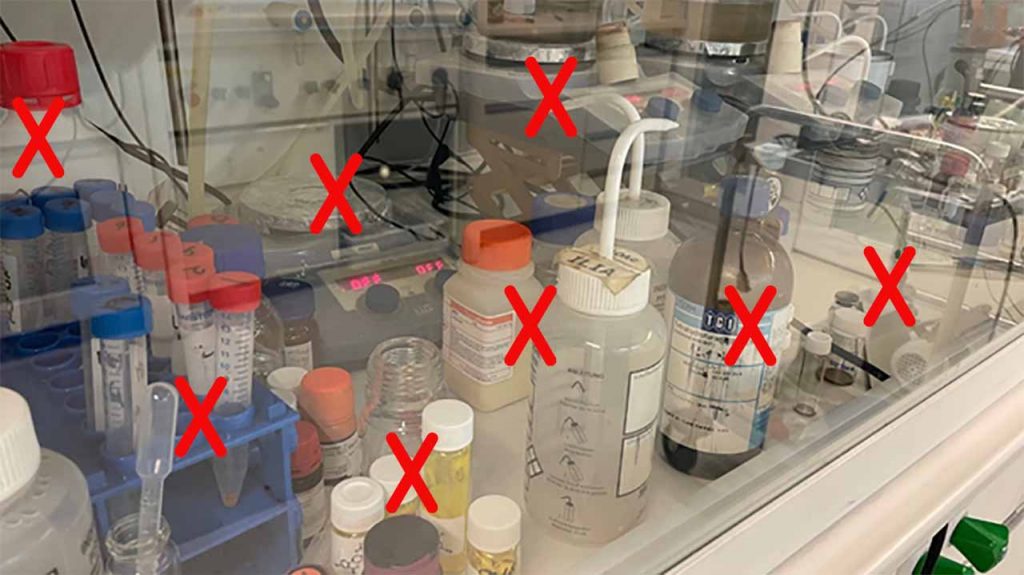
Objects permanently mounted on the fume hood such as Schlenk lines can remain in place as long as the airflow is not obstructed.
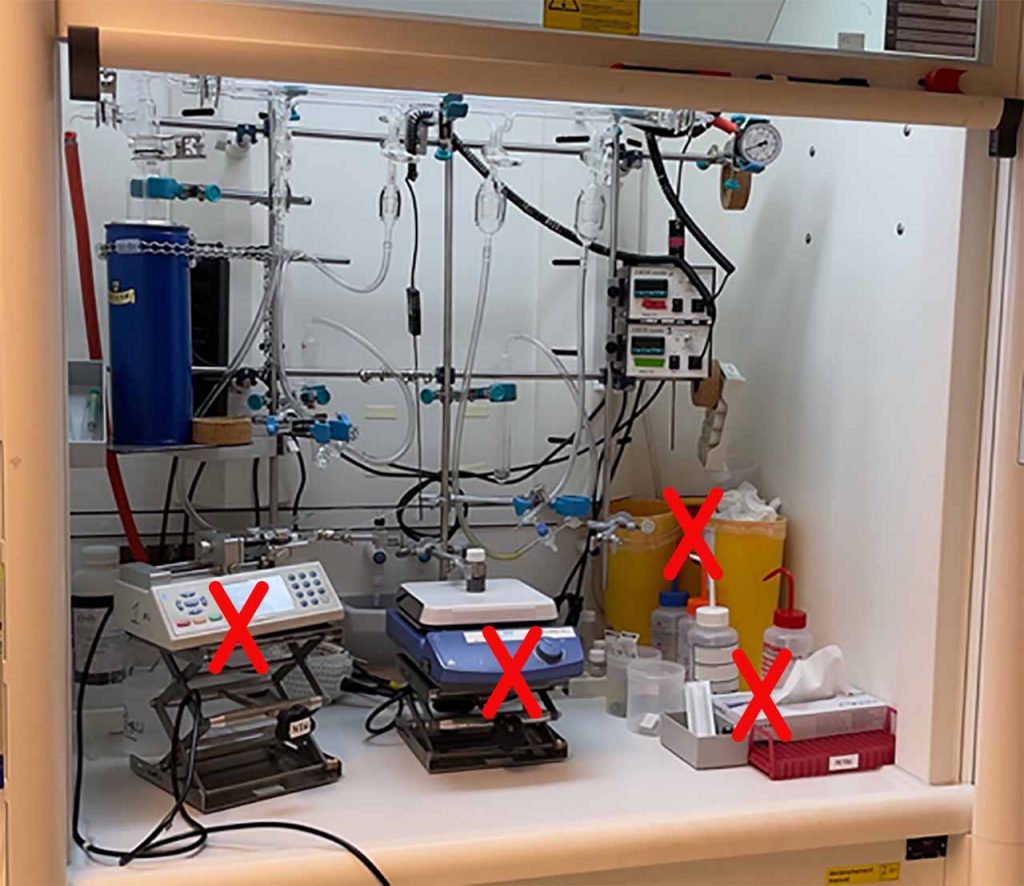
When possible, large pieces of equipment should also be removed if they can be moved without tools.
If a hood is dedicated to the use of equipment that is difficult to move (e.g. a Rotavapor), it will be controlled as is, but only if it is possible to leave a space of 30 cm in front of it.
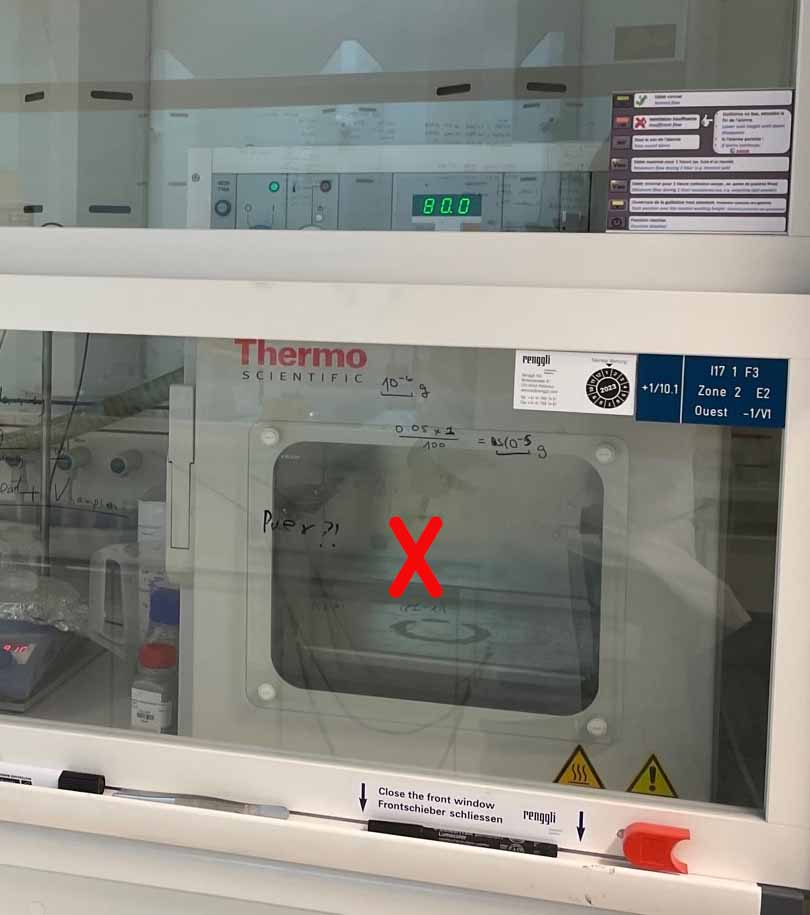
If it is not possible to control it, it also means that the equipment is too large and affects the airflow of the fume hood. The OHS department will then decide that this fume hood does not guarantee optimal protection with the sash open. It is advisable to limit the activity of this fume hood to processes that can be performed with the sash down (e.g. an HPCL analyzer).
This label indicates that the fume hood does not provide optimal protection when the sash is open.
More information on fume hoods
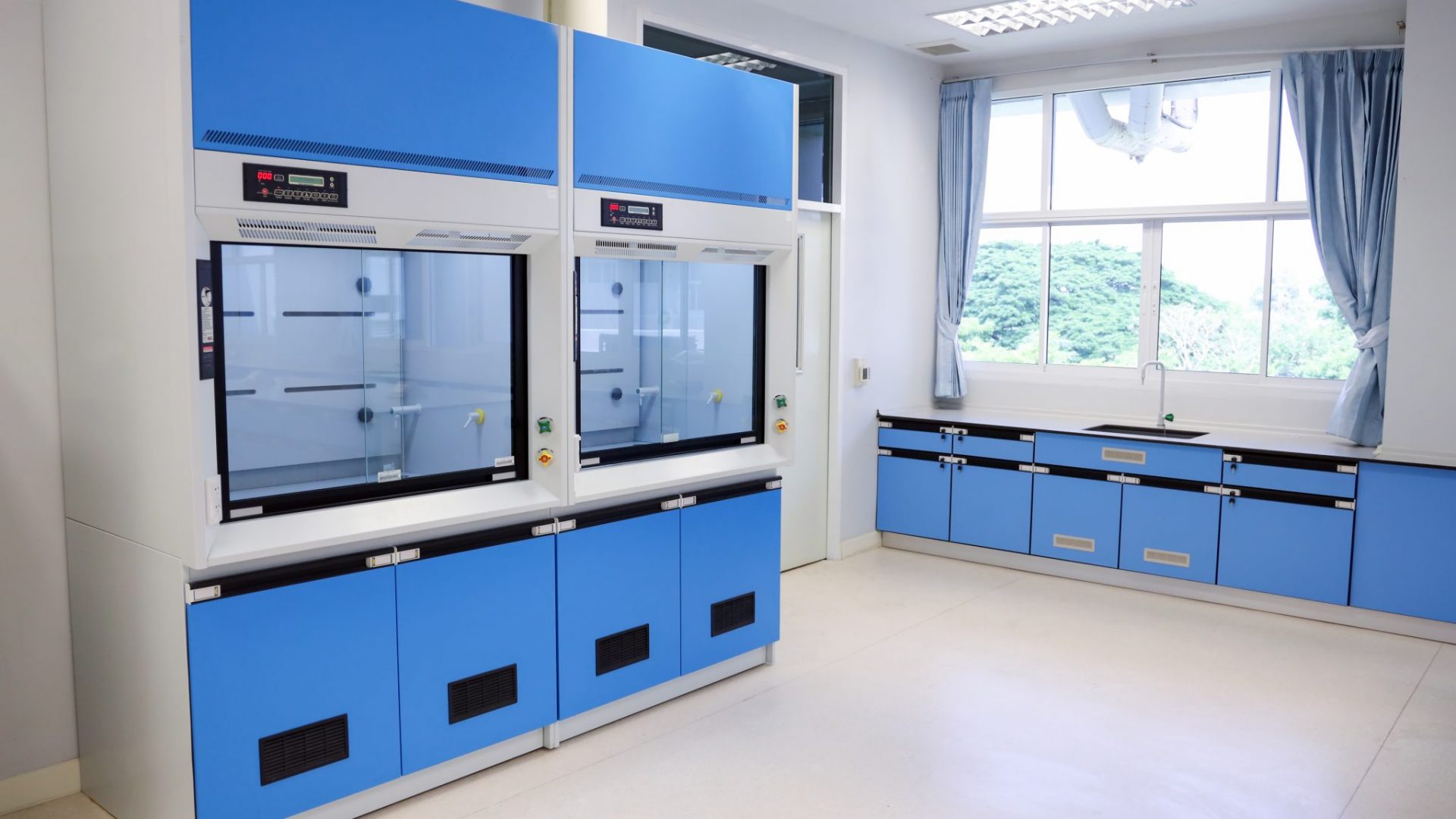
Laboratory fume hoods
Use and good practice of laboratory fume hoods